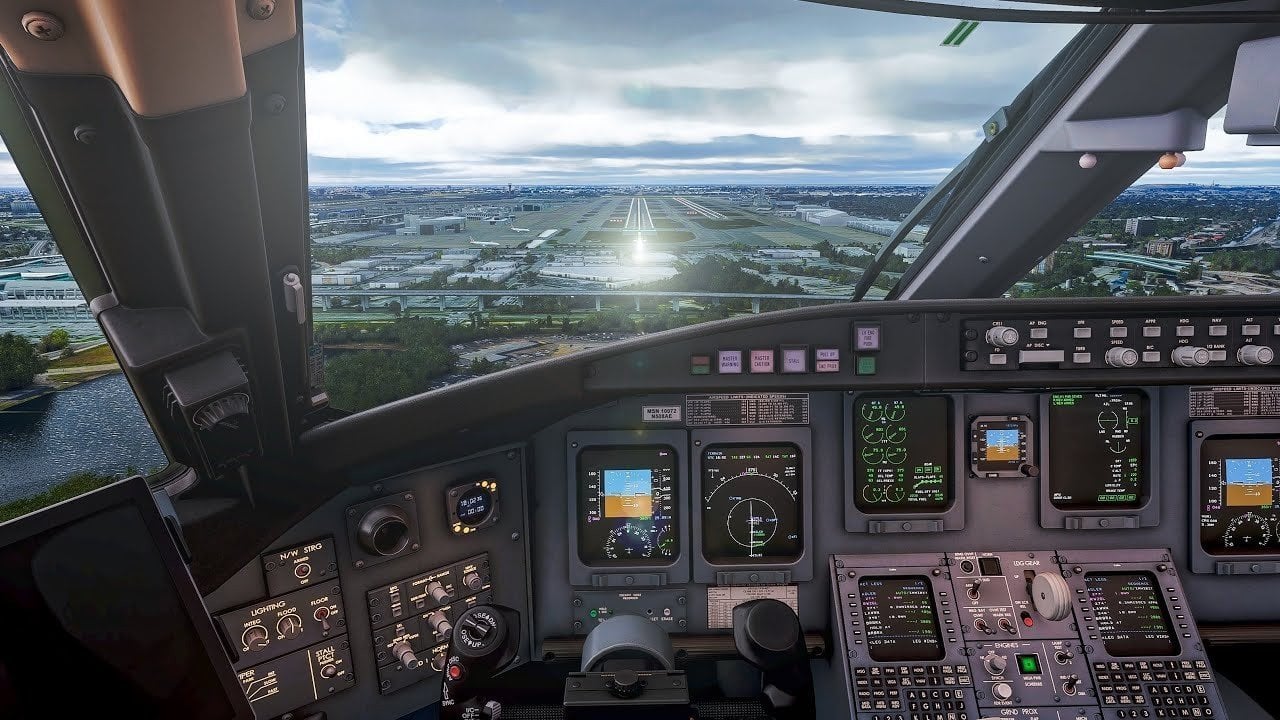← Back to home

Sim Pilot Practice: Where to Start and How to Develop
Author: Команда X-Shop • 11/13/2025 • 71 views
First Steps: Don't Try to Take on Everything
Many beginners make the same mistake: they jump right into the cockpit of a Boeing 737 or Airbus A320 and try to take off. The result is predictable—the plane either doesn't take off or stalls on takeoff. This is normal, and everyone has been there.
Start simple. A Cessna 172 or Piper PA-28 are your best friends when you're just starting out. These small airplanes will teach you the basics: how to control the elevator, ailerons, and rudder, how to monitor speed and altitude, and how to feel the aircraft.
Imagine learning to drive a car. No one starts with a truck or a bus—first, a car, and then everything else.
Your First Flight: A Simple Route
Choose a familiar city or airport. Make it a short route—a 20-30-minute flight. For example:
From Vnukovo to Domodedovo (Moscow)
From Nice Airport to Cannes (Côte d'Azur)
From San Francisco to Oakland (over the Gulf)
Short routes are great because you won't get tired, you'll have time to remember everything, and you can repeat the flight several times, honing your skills.
A checklist is your bible
In real aviation, pilots never rely on memory. They use checklists—step-by-step instructions for each stage of the flight. You should do the same.
Don't be shy about keeping a printout or a second monitor with the checklist in front of you. This isn't cheating—it's professionalism. Over time, many actions will become habitual, but the checklist should always be at hand. A sample checklist for a light aircraft looks like this:
Before takeoff: check fuel, flaps, trim
Engine starting: magneto, starter, warm-up
Before takeoff: controls free, instruments checked, flaps in takeoff position
Takeoff: full throttle, takeoff roll, at 60 knots, pull the control column
Climb: reduce throttle to cruise, retract flaps
Cruise: monitor route, adjust altitude
Descent: gradually reduce throttle and altitude
Landing: extend flaps, reduce speed, flare over the runway
Practice landings separately
Landing is the most difficult part of any flight. Even experienced pilots practice touchdowns constantly.
Use the "free flight" mode in the simulator: position the aircraft on final approach 5-7 kilometers from the runway, at an altitude of 500 meters. Practice only the approach and touchdowns. Over and over again. Don't be discouraged if your first 20-30 landings are rough. A smooth touchdown is a matter of hours of practice, not talent.
Learn one aircraft deeply
It's better to know one aircraft 100% than ten aircraft 10% of the time. Choose your "primary" aircraft and learn it thoroughly:
Where are the switches and what they do
How do the systems (electrics, hydraulics, fuel) work
What speeds are optimal for different phases of flight
How does the aircraft handle abnormal situations
When you feel confident, move on to the next aircraft. Skills transfer, but each aircraft has its own character.
Increase difficulty gradually
Start with ideal conditions: clear weather, daylight, excellent visibility. Once you feel confident:
Add wind (start with 10-15 knots)
Try flying in cloud cover (but only during the day)
Master night flying
Add turbulence
Try flying in rain or snow
Learn to fly only by instruments (without visual contact with the ground)
Each new level of difficulty is a separate skill. Don't try to master everything at once.
Use online networks (when you're ready)
VATSIM and IVAO are online flight networks where real people act as dispatchers, and other pilots fly alongside you. It's incredibly atmospheric and realistic.
But don't rush into it. First, learn to fly offline confidently, learn the basics of radio communication, and practice following dispatcher commands. When you feel ready, welcome to the skies with real people.
Learn from mistakes
Crashed on takeoff? Great—now you know what happens if you raise the nose too sharply. Didn't make it to the runway? That means you started your descent too early. Every mistake is a lesson.
Professional pilots use simulators precisely to learn from mistakes without consequences. Take advantage of this.
The key is to have fun.
Flight simulators are designed to be fun. Don't turn them into work. If something doesn't work, put it aside, take a rest, and come back later with a fresh mind.
Remember: every experienced sim pilot was once a rookie who couldn't understand why the engines wouldn't start or why the plane kept turning on takeoff. Patience, practice, and a love of the sky—that's all you need.
Happy flying!
X-ShopозыFlightSim